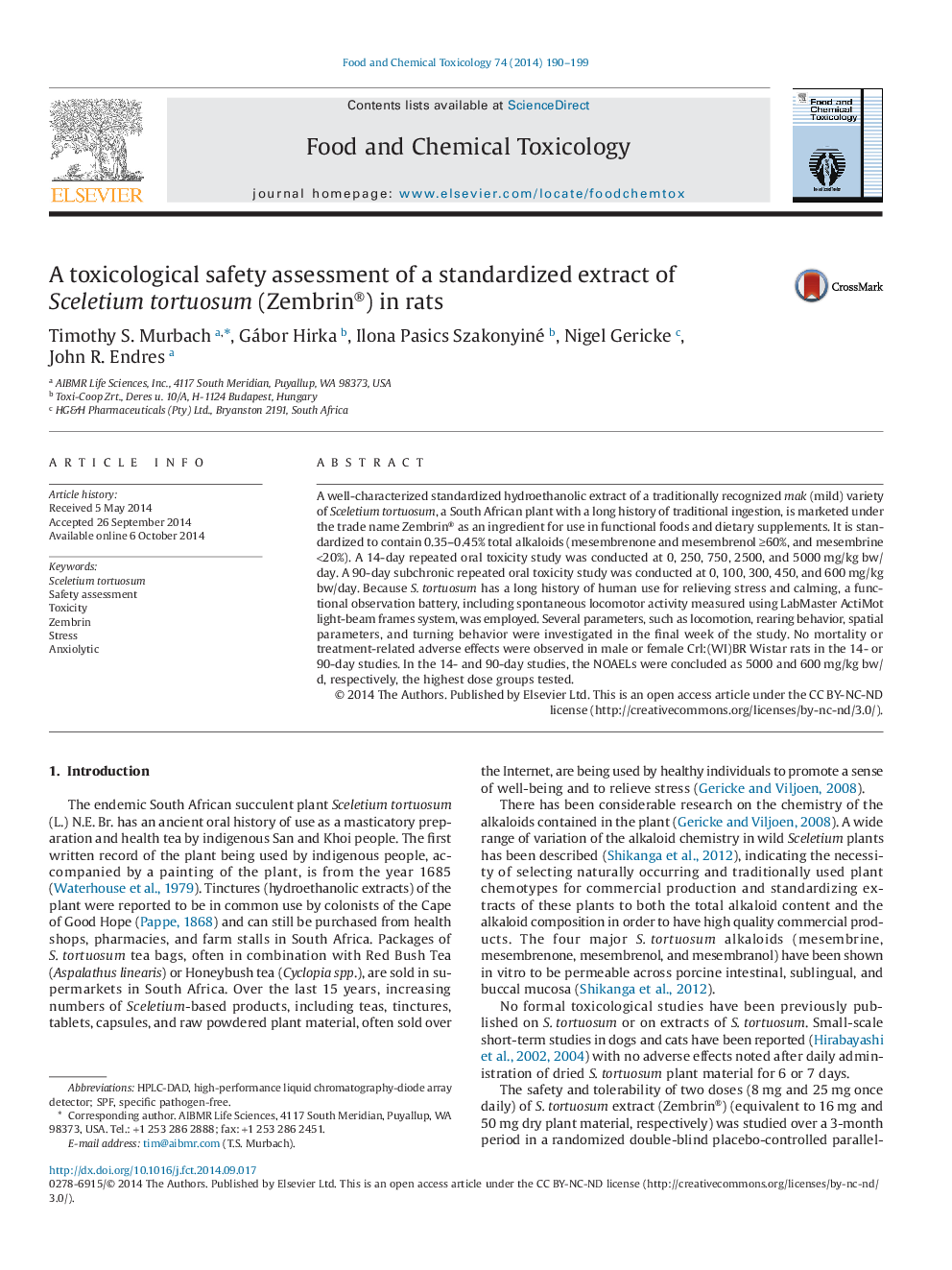| Article ID | Journal | Published Year | Pages | File Type |
|---|---|---|---|---|
| 5849976 | Food and Chemical Toxicology | 2014 | 10 Pages |
Abstract
A well-characterized standardized hydroethanolic extract of a traditionally recognized mak (mild) variety of Sceletium tortuosum, a South African plant with a long history of traditional ingestion, is marketed under the trade name Zembrin® as an ingredient for use in functional foods and dietary supplements. It is standardized to contain 0.35-0.45% total alkaloids (mesembrenone and mesembrenol â¥60%, and mesembrine <20%). A 14-day repeated oral toxicity study was conducted at 0, 250, 750, 2500, and 5000âmg/kg bw/day. A 90-day subchronic repeated oral toxicity study was conducted at 0, 100, 300, 450, and 600âmg/kg bw/day. Because S.âtortuosum has a long history of human use for relieving stress and calming, a functional observation battery, including spontaneous locomotor activity measured using LabMaster ActiMot light-beam frames system, was employed. Several parameters, such as locomotion, rearing behavior, spatial parameters, and turning behavior were investigated in the final week of the study. No mortality or treatment-related adverse effects were observed in male or female Crl:(WI)BR Wistar rats in the 14- or 90-day studies. In the 14- and 90-day studies, the NOAELs were concluded as 5000 and 600âmg/kg bw/d, respectively, the highest dose groups tested.
Keywords
Related Topics
Life Sciences
Agricultural and Biological Sciences
Food Science
Authors
Timothy S. Murbach, Gábor Hirka, Ilona Pasics Szakonyiné, Nigel Gericke, John R. Endres,
